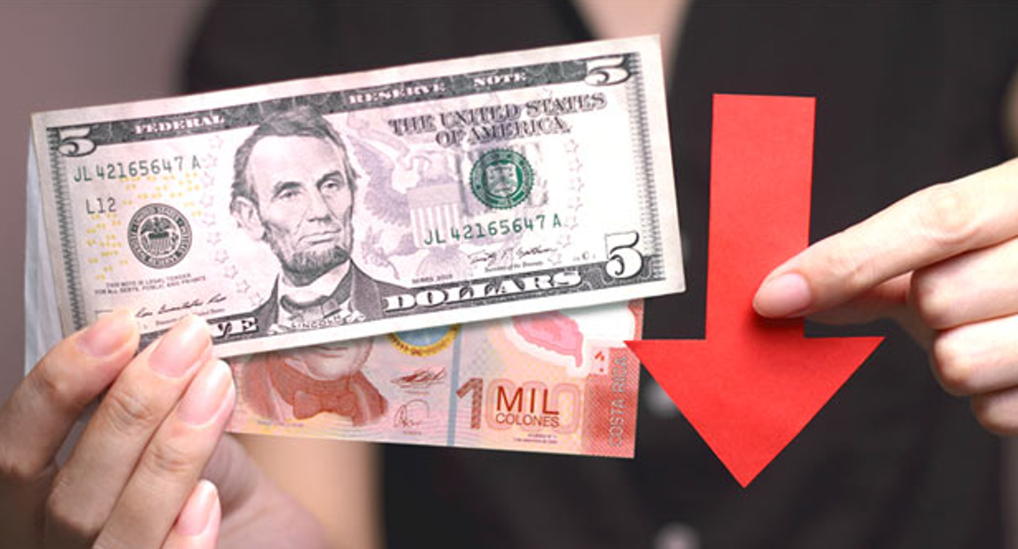Costa Rica News – In the last three months, the exchange rate of the U.S. dollar against the national currency, the Colón, in the wholesale Monex market dropped from an average of ¢580 per dollar at the beginning of September, to ¢566 on November 27.
The main reason behind the reduction in the exchange rate in recent months could be an increase in the supply of dollars usually generated by multinational companies, on these dates, when more dollars are added to the country to pay taxes at the end of the fiscal period.
Economist Melvin Garita explained that “the exchange wickets have seen an excess of currencies, which also responds to a methodological change in the exchange position. In addition, debt issuances in dollars that the Ministry of Finance has made may have influenced people’s expectations, who hope that these resources will be exchanged in local currency.”
“November is expected to close next week with low volatility and little upward pressure on the exchange rate, since in this period the flow of sales of dollars by companies and individuals is usually intensified to attend to – besides the payment of taxes – disbursements for Christmas bonuses (Aguinaldo) and vehicle tax payments (Marchamo), among other things.”
The La Republica reports that the exchange rate would have a great downward pressure after the Ministerio de Hacienda (Ministry of Finance or Treasury) raises US$1.5 billion dollars in the foreign market.
Even so, the Treasury after a payment of almost US$890 million dollars on five series of bonds that expire next year, it would have more than US$600 million dollars that it could ‘colonizar’ (colonise) to face other payments such as bonuses and salaries, which would bring an appreciation of the colon against the dollar or downward pressure.
Experts say that we will have to wait to see what the Central Bank (Banco Central) will do, as it could buy up at a large part of these dollars, so that the exchange rate does not go down much and thus increase its international reserves, but that would make senseless the credit of US$1 billion dollars it took out from the Fondo Latinoamericano de Reservas (Latin American Reserve Fund).
This action, the current administration’s kicking around of the fiscal ball, without a doubt gives it a respite and leaving the problem for the next government.
On the other hand, speculation reigns in the market, as the Treasury will not reveal details on the bond placement agency and who was the international buyer of the bonds. Also, the rate at which the bonds were placed is not known, although it could be close to 7% for a ten-year term.
The winners of this monetary policy (low dollar exchange) are:
- Debtors in dollars
- Importers, since they will have to allocate fewer colones to pay for the products
- New Investors
The losers:
- Exporters who will lose competitiveness abroad
- Investors who have bonds to 2027 in their portfolio, who may be losing value in their investment
- Tourism, as the country becomes more expensive for tourists arriving with dollars
Economist Gloriana Ivankovich had this to say about the US$1.5 billion dollar bond issue, “the Legality is questionable and we keep kicking the ball. In the end, nobody will say anything, but this can be debatable since for practical purposes this is external debt.”
From QCostaRica

